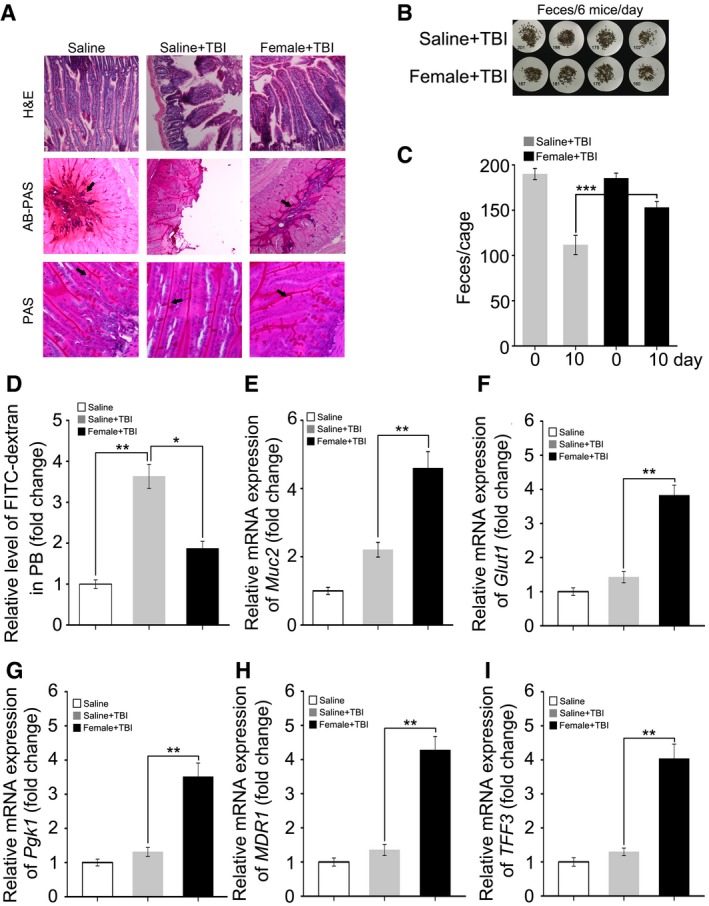Figure EV2. Faecal microbiota transplant ameliorates GI tract function and epithelial integrity after irradiation.

-
AThe morphology of small intestine in radiation‐induced mice treated with saline or sex‐matched FMT is shown by H&E, AB‐PAS and PAS staining, the small intestine tissues were obtained at day 21 after TBI. The arrows point to the mucus layer or goblet cells.
-
B, CFaecal pellet counts removed from cage bedding per 3 day from representative cages. Mean ± SD, n = 6 mice per treatment. ***P < 0.001 by Student's t‐test between Saline + TBI and Female + TBI group.
-
DThe FITC–dextran in peripheral blood from saline‐treated and sex‐matched FMT mice was assessed at day 21 after irradiation exposure. Mean ± SD. Significant differences are indicated: *P < 0.05, **P < 0.01; Student's t‐test, n = 6 per group.
-
E–IThe expression levels of Muc2, Glut1, Pgk1, MDR1 and TFF3 were examined in saline‐treated and sex‐matched FMT mice by quantitative PCR, the small intestine tissues were obtained at day 21 after TBI. Mean ± SD. Statistically significant differences are indicated: **P < 0.01; Student's t‐test, n = 12 per group.
